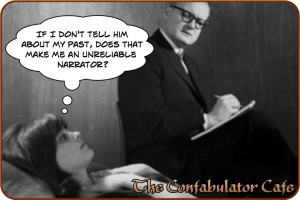This week’s question: How do you develop your characters?
I would like to object to the form of the question in that it involves facts not in evidence: to wit, that I am a fiction writer.
Yes, I have on occasion committed fiction. Each November I do Nanowrimo, stringing together some 50,000 words of original— well, dreck is not too harsh— and there are a few instances of fanfic in my past (I was young and naive, all the cool kids were doing it, I didn’t inhale…). Every once in a while a stray plot bunny hops into my yard to die of neglect. But my bread and butter, quite literally, lie in non-fiction writing.
When I write fiction, it is entirely an exploratory exercise. I’m building a world, manipulating my characters, applying my hard-won wisdom to their travails (also inflicted by myself). Sometimes it’s glorious. Often it’s a disaster. I don’t care either way, because I’m far more interested in the experience of creation than the end product.
When klutzy, unathletic me was involved in sports, I always enjoyed learning the skills, but I never cared to compete. Other athletes couldn’t understand this at all, “What’s the point if you don’t want to be a champion?” they would wail, utterly befuddled. The point, of course, was the inward journey, the acquisition of skills, strengthening and using my body—never the score. In fact, I found scores and rankings the complete opposite of motivational. Who wants to see their name constantly at the bottom of the list?
The same is true for having others read my fiction. I have friends who are published, and congratulations to them all. But I have no desire whatsoever to follow in their footsteps, to seek notoriety, glory, or acclaim for my work. There are those who ask, “What’s the point if you’ve not going to becomes a Big Name Author?” I have no answer except for the inside journey. I don’t need to seek anyone’s approval to keep writing. I don’t even want their approval. It would ruin the fun.



